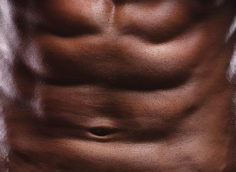Here's what you need to know...
- The main problem with CrossFit is the WOD – the workout of the day that's performed at high speed.
- CrossFit wants to focus on strength, speed, endurance, and everything else. The current CrossFit methodology misses the mark, but it can be fixed. The way to do this is to categorize movements as either "high skill" or "low skill."
You're probably already thinking that this is going to be ten minutes of CrossFit bashing. It's not. That's not helpful or useful to anyone, and it's been done to death. What I want to do is to help find a middle ground by keeping the best aspects of CrossFit and getting rid of the things that hurt people.
A few observations about CrossFit, three positive and two negative:
- CrossFit has shown a lot of people a door to exercise that isn't paved with single body-part machines and treadmills. Lifting real weights is cool and becoming more mainstream, as Mark Rippetoe and others here at T Nation have mentioned before in CrossFit: The Good, Bad, and the Ugly.
- People who do CrossFit generally look like they're having a good time and that's great because exercise should be enjoyable.
- In general, regular people who do CrossFit are what we might describe as being "in pretty good shape."
- The injury rates in CrossFit are way too high.
- The purpose of exercising is to make you better, not worse.
Additionally, it seems that the focus of CrossFit is very highly geared toward conditioning over strength. This is partially true due to the focus on moving as fast as possible most of the time, often against the clock.
However, the pendulum swings both ways and a lot of the criticism CrossFit gets for being too conditioning-focused is from people who are lazy or perhaps intimidated by high levels of conditioning. There's nothing wrong with doing conditioning and there's certainly nothing wrong with doing a minimal amount of conditioning. Open your mind to the fact that both have value that depends on your individual goals.
Ninety-nine Problems, But the WOD is the Worst
The main problem with CrossFit is the WOD – the workout of the day that's performed at ludicrous speed. Speed in itself isn't the problem. I've competed in most sports at this point (including martial arts, highland games, soccer, etc.), and I know for a fact that speed kills, but the parameter for determining whether you should do something is simple: "Can you do it well?"
If you can do it well, do it. If you can't, don't. CrossFit wants to focus on strength, speed, endurance, and everything else – and so do I. What's better than possessing all the athletic qualities and making your body a force to be reckoned with? Problem is, the current CrossFit methodology misses the mark, but it can be fixed. The way to do this is to categorize movements as either "high skill" or "low skill."
- High Skill: You must do this movement with little to no fatigue, lower repetitions, and adequate rest.
- Low Skill: Go fast and lots of reps. Get after it, you lazy SOB. I'm giving you the green light.
For most of us, handstand walking and back flips are "high skill," so it doesn't make sense to have them as part of a WOD. It's also pretty easy to make the argument that the Airdyne bike or battling ropes are safe enough to do at almost any intensity, though vomiting is always a possibility. Dragging a tire attached to a belt would probably also fall under this category, too.
The Olympic lifts, however, are another matter. You might think I'm going to spout off some BS about how high-rep Olympic lifting is dangerous... and you'd be half right. It is, for most people. Some, however, have achieved such a high level of skill in Olympic lifting that they can basically do however many reps they want and they won't be in any danger. The same could be said for handstand walking – for some of us.
I'm at the point where I could do handstand walking and hang cleans for high reps in a fatigued state and I'd be just fine, but I wouldn't ever put those in a program for any of my students. As such, a WOD should be tagged with the proper High Skill or Low Skill label. That way, trainees know what they're getting into and they can enhance their skills in a safe environment until the O-lifts become "low skill." Then those lifts will be much safer for a WOD.
There's no need to dismiss CrossFit entirely and abandon their brand of high intensity and conditioning just because most people do it wrong and take it too far. It's good to sweat and move fast; just make sure you have a good risk/reward ratio and you only go balls-out and get after it with low skill maneuvers for your metabolic conditioning workouts.
Here are a couple of examples of low-skill WODs that I'd feel comfortable prescribing to almost anyone:
Example #1:
| Exercise | Sets | Reps | |
|---|---|---|---|
| A | Power Snatch | 5 | 3 |
| B1 | Push-Up | 20 | |
| B2 | Row | 20 | |
| B3 | Airdyne | 1 min. |
Repeat B1, B2, and B3 for 10:00
Example #2:
| Exercise | Sets | Reps | |
|---|---|---|---|
| A1 | Deadlift | 5 | 5 |
| A2 | Single-Arm Push Press | 5 | 10/arm |
| A3 | Sled Drag | 5 | 1 min. |
These examples are a bit more rigorous than I personally would do, but in general, these would be appropriate for anyone who's adept at push-ups, rows, Airdyne, and push presses. In general, though, if your workout is low skill, you're good to go and you should let your creativity guide your WODS.
The goal of course, is to have fun, and get better every day. If you can do that with handstands and back flips and high-rep O lifts, and you can do them well, then more power to you.





